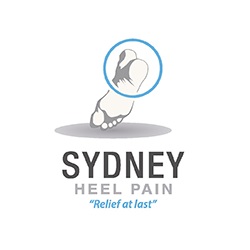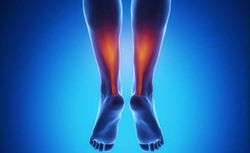
Karl Lockett
Clicking on the Send Me Details Now button opens an enquiry form where you can message Karl Lockett directly
Achilles Tendonitis
Focus areas
What is Achilles tendonitis?
Achilles tendonitis describes the painful condition caused by the inflammation of the Achilles tendon. Achilles tendonitis is frequently classified as an overuse syndrome, since it mainly occurs as a result of overuse of the foot or excessive stress on the Achilles tendon. Micro-tear injury can also occur when a stressed tendon is not allowed adequate time to heal. Achilles tendonitis is a common condition affecting both competitive athletes and leisurely sportspeople alike. Causes other than overuse from exercise can also lead to the development of this painful condition in people who are not physically active. Achilles tendonitis can be described as being either insertional or non-insertional. This is depending on which part of the tendon is affected. Insertional Achilles tendonitis involves the lowermost part of the tendon, where the Achilles tendon attaches to the heel bone. Non-insertional Achilles tendonitis involves the middle part of the tendon, between the calf muscles and attachment to the heel bone.

What is the Achilles tendon?
In order to understand Achilles Tendonitis, it is important to understand tendon itself. The Achilles tendon is a thick and very strong structure that runs down the back of the lower leg. It is often described as being cord-like. The purpose of the Achilles tendon is to connect the calf muscles (namely the plantaris, gastrocnemius and soleus muscles) to the heel bone (the calcaneus) in the foot. The function of the Achilles tendon is essential in performing actions such as walking, running, climbing stairs, jumping, and standing on your toes.
What are the risk factors for developing Achilles tendonitis?
Whilst it is possible that Achilles tendonitis can occur in anyone, there are certain factors that may increase a person’s likelihood of developing the painful condition. Some of these risk factors can include:
- Being male: Achilles tendonitis is more prevalent in men than women
- Age: the risk of developing Achilles tendonitis increases with increasing age
- Overweight and obesity: being overweight or obese increases the risk of Achilles tendonitis
- Pes planus: having overpronated (flat) feet with a flatter arch puts more pressure on the Achilles tendon
- Tight calf muscles: increase the strain on the Achilles tendon
- Sudden changes in activity level: particularly suddenly increasing the intensity or duration of exercise
- Explosive movements: participating in sports that require explosive movements such as quick pivoting, box jumps or burpees, increases the risk
- Medications: taking fluoroquinolone antibiotics is associated with higher rates of Achilles tendonitis.
What are the symptoms of Achilles tendonitis?
Patients with Achilles tendonitis tend to experience some common symptoms and clinical signs. These may include some or all of:
- Pain and stiffness in the area of the Achilles tendon, that is normally worse first thing in the morning
- Pain across the back of the heel generally down the area of the Achilles tendon that gets worse when exercising
- Severe pain the day following a bout of physical activity (ie the day after a sport game or match)
- A reduction in strength in the lower leg
- A reduction in the range of motion of the ankle
- A raised thickening or lump at the back of the heel.
There is sometimes redness and swelling at the lower part of the back of the affected leg. In patients suffering from non-insertional Achilles tendonitis, there is often a thickened, raised swelling in the middle part of the tendon, at the lower part of the back of the leg. This is due to the breakdown and inflammation of the fibres in the middle section of the Achilles tendon. In patients with insertional Achilles tendonitis, the swelling or a lump is usually visible at the base of the back of the leg, at the back of the heel bone where the Achilles tendon attaches.
Heel spurs associated with Achilles tendonitis
In cases of insertional Achilles tendonitis, it is not uncommon for bone spurs to form at the back of the heel bone, where the Achilles tendon attaches. This type of heel spur is known as a retrocalcaneal exostosis. This occurs as a result of calcium depositing at the insertion point, due to constant strain and pressure on the tendon. While heel spurs themselves are not a direct cause of pain in patients, they do contribute to inflammation and irritation to surrounding tissues by physically digging in, which can cause pain to the patient. Heel spurs generally form over a period of months of strain on the Achilles tendon, so therefore preventing them from forming is largely based upon paying attention of the overall health of the lower leg and foot, to minimize undue strain.
What to do if you suspect you have Achilles tendonitis?
It is important to seek medical attention as soon as is practical if you experience any of the symptoms or signs of Achilles tendonitis. In patients diagnosed with Achilles tendonitis, appropriate timely treatment under the guidance of a suitably qualified sports podiatrist will, in many cases, allow the patient to safely resume exercising within a few short weeks. You should never push through the pain. Unfortunately, if you ignore the pain or it is not properly managed, Achilles tendinopathy may result. Achilles tendinopathy is a chronic degenerative condition, where the body stops the inflammatory process in the tendon and effectively, it begins to break down. Achilles tendinopathy is significantly more difficult to treat. In some instances, the degeneration of the tendon weakens it to a point where Achilles rupture may occur. Achilles tendon rupture requires a significantly longer recovery time and recovery outcomes are poorer.
Until medical advice can be sought, you can be proactive by safely:
- Resting and elevating the painful leg to reduce pressure
- Icing the sore area with a covered ice pack for 20 minutes at a time at regular intervals throughout the day to reduce pain and swelling
- Apply compression using an elastic bandage to apply firm but comfortable pressure to the sore leg and foot.
How is Achilles tendonitis diagnosed?
Your sports podiatrist will have had a great deal of experience in diagnosing and treating cases of Achilles tendonitis. Your consultation will include a comprehensive discussion about your pain symptoms and what makes the pain worse, your current and past exercise habits, and any injuries you may have sustained along the way. The physical examination will involve palpating (physically feeling) the sore leg for any abnormalities, comparing it with the uninjured leg, and locating the source of the pain. Diagnostic imaging is not normally required, however in some cases, your sports podiatrist may wish for you to have an ultra sound or MRI scan. This will allow your specialist to visualize the structures in the lower leg and foot in great detail, allowing them to rule out any other conditions that may be causing you similar pain symptoms.
How is Achilles tendonitis treated?
Treatment for Achilles tendonitis is aimed at reducing pain and inflammation and allowing the tendon to heal. Your sports podiatrist will tailor a treatment plan to your individual circumstances, taking into account variables such as the extent of your injury, your level of pain, normal daily activities and whether or not you are a competitive athlete. Aside from the RICE (rest, ice, compression, elevation) protocol for pain relief, your sports podiatrist my also recommend one or more of the following treatments for your condition:
- Extracorporeal shockwave therapy (ESWT), where high-energy sound waves are precisely directed into the affected or injured area, where they stimulate the body to send healing factors to the tendon. This treatment also provides almost instant pain relief.
- NSAIDs, non-steroidal anti-inflammatory drugs may be recommended if your pain is severe. These help to reduce inflammation in the short term.
- Stretching
- Heel wedges inside shoes
- Footwear recommendations / changes
Is Achilles tendonitis preventable?
There are some simple steps you can take to reduce your risk of developing Achilles tendonitis. These include:
- Ask your sports podiatrist for their recommendation as to what type of footwear is most appropriate for supporting your foot for your chosen sport or activity
- Always take the time to warm up and cool down with appropriate stretches before and after you exercise
- Incorporate some stretching and strengthening sessions into your training program, to maintain strength and flexibility
- Plan to gradually increase your level of activity and avoid sudden changes in your training program if possible
- Allow adequate recovery time between training sessions
- Avoid activity that causes you pain, and if you experience pain while exercising, stop at once and follow the RICE procedure until you can obtain medical advice.
Please note that the information provided in the article above about Achilles tendonitis should not be taken as general advice. It is intended for informational purposes only. If you are experiencing pain and you suspect that you may have Achilles tendonitis, then you should consult with a qualified sports podiatrist to discuss your concerns. Appointments can be made online at sydneyheelpain.com.au or by calling 02 93883322.
Karl Lockett – sports podiatrist.
Click on Send Me Details Now to get started
Send Me Details Now